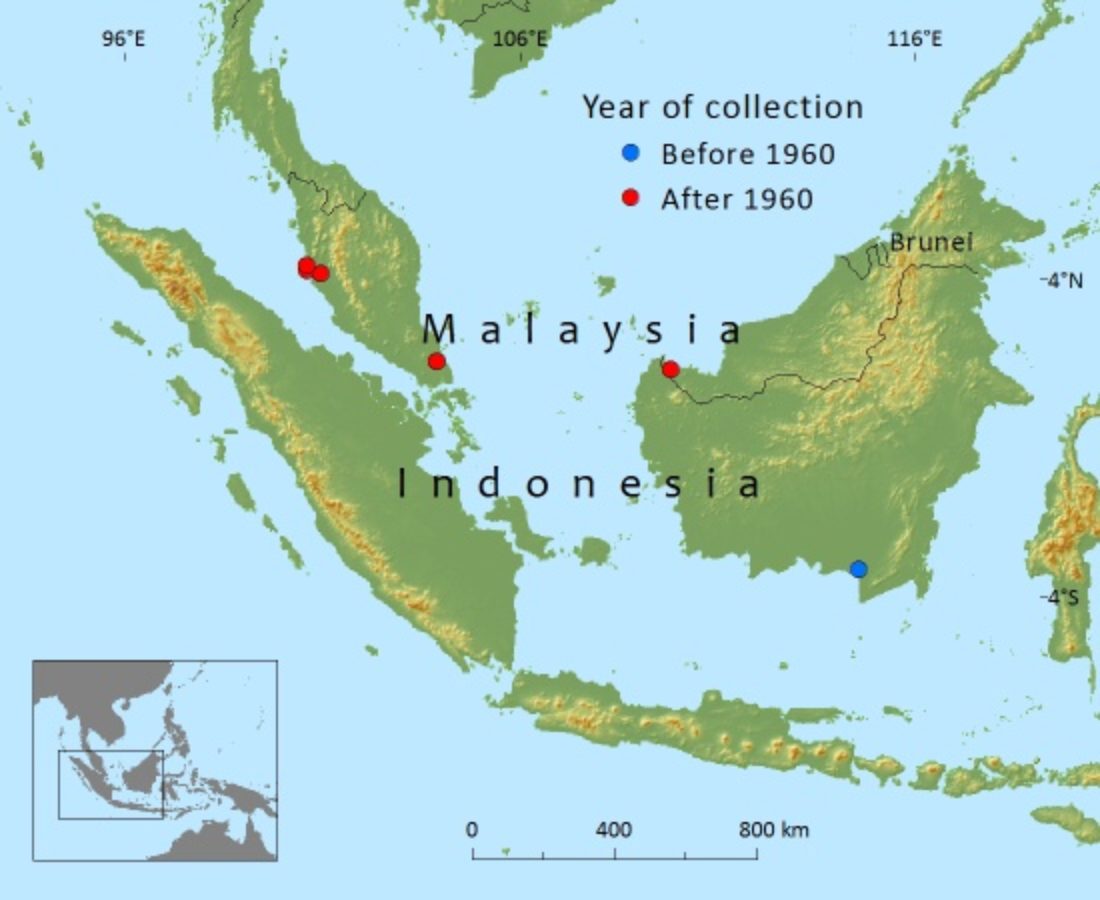Podocarpaceae
Nageia motleyi
Native to many countires in South-east Asia where there has been a dramatic loss due to the conversion of rainforest to oil plam plantations
Human Uses
Like many other tropical Podocarps it produces a valuable timber that is used construction, plywood, veneer and furniture.
References and further reading
- Curran, L.M., Trigg, S.N., McDonald, A.K., Astiani, D., Hardiono, Y.M., Siregar, P., Caniago, I. and Kasischke, E. (2004). Lowland Forest Loss in Protected Areas of Indonesian Borneo. Science 303(5660): 1000 - 1003.
- Farjon, A. (2010). A Handbook of the World's Conifers. Koninklijke Brill, Leiden.
- Jusoff, K., C.H. Hassan & Hamzah, K.A. (2007). Tropical peat swamp forest ecosystem and floristic diversity in Pahang, Malaysia. Journal of Systems Applications, Engineering and Development 3(1): 41-44.
- Laumonier, Y., Uryu, Y., Stuwe, M., Budiman. A., Setiabudi, B. & Hadian, O. (2010). Eco-floristic sectors and deforestation threats in Sumatra: identifying new conservation area network priorities for ecosystem-based land use planning. Biodiversity and Conservation 19: 1153-1174.
- Thomas, P. 2013. Nageia motleyi. The IUCN Red List of Threatened Species. Version 2015.2. <www.iucnredlist.org>. Downloaded on 07 September 2015.
- UNEP. (2007). Extent of deforestation in Borneo 1950-2005, and projection towards 2020. Available at: http://maps.grida.no/go/graphic/extent-of-deforestation-in-borneo-1950-2005-and-projection-towards-2020. . (Accessed: 20 February 2012).
- UNEP/GRID. (2002). Disappearing forests (Thailand). Available at: http://maps.grida.no/go/graphic/disappearing-forests . (Accessed: February 20, 2012).
- Uryu, Y., Purastuti, E., Laumonier, Y., Sunarto, Setiabudi, Budiman, A., Yulianto, K., Sudibyo, A., Hadian, O., Kosasih, D.A. and Stüwe, M. (2010). Sumatra’s Forests, Their Wildlife and the Climate. Windows in Time: 1985, 1990, 2000 and 2009. A quantitative assessment of some of Sumatra’s natural resources submitted as technical report by invitation to the National Forestry Council (DKN) of Indonesia. WWF Indonesia, Jakarta.
- Wetlands International. (2010). A quick scan of peatlands in Malaysia. Wetlands International, Petaling Jaya, Malaysia.
